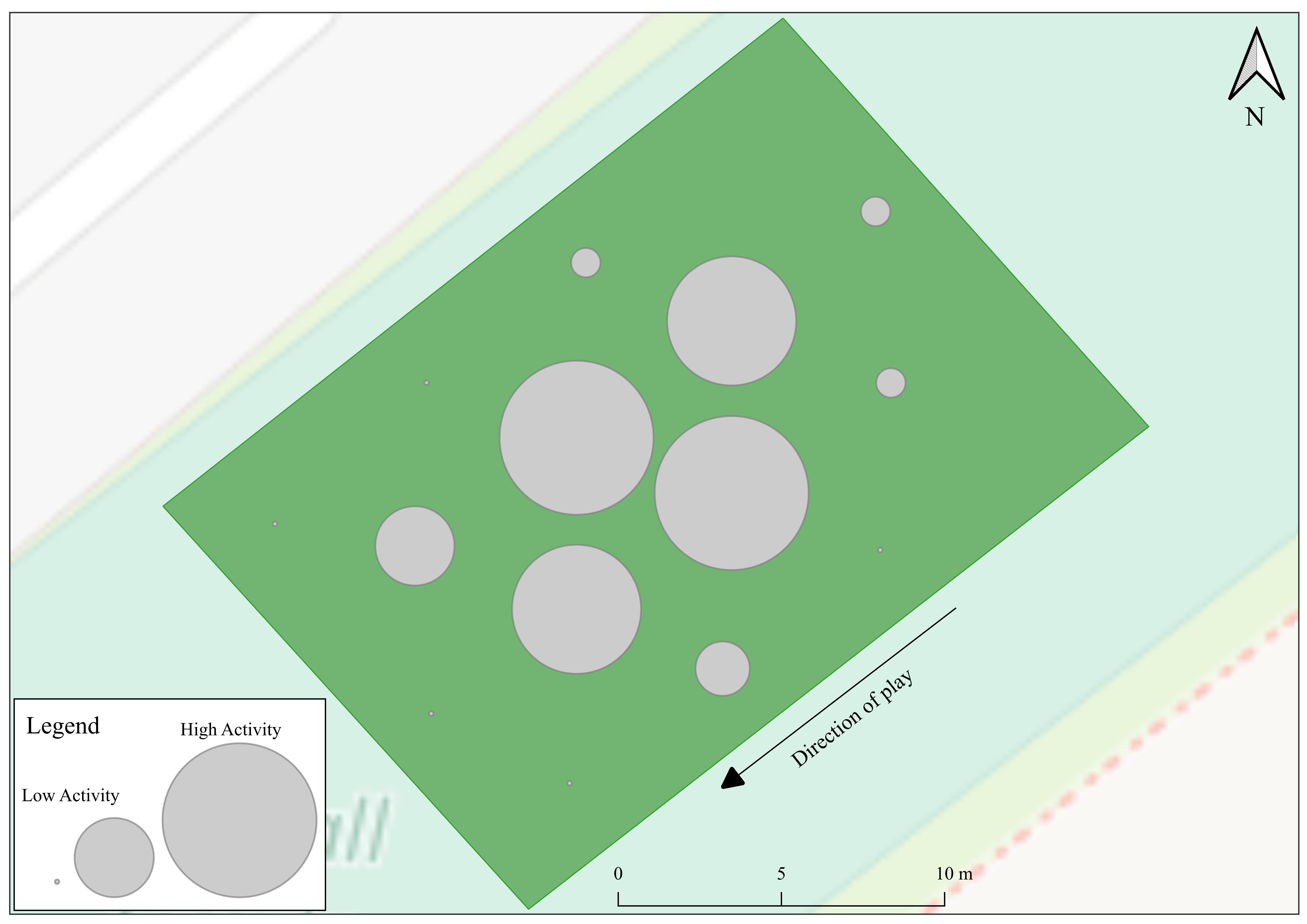This chapter is based on my activity during a few recent sessions of football. The data for this series was generated using a wearable fitness tracker which calculated my spatial location in the form of point data for each second of the activity. I was able to export this point data in GPS Exchange Format (also known as GPX) and load it into QGIS.
The data is analysed to depict spatially my overall movement, average positioning and relative time spent in various areas on the field of play. Two series of maps are displayed below (A and B1) and are based on my activity at two different footballing venues.
The first step of the analysis involved exporting the GPX files into shapefile format to enable the analysis of the data. With the data in shapefile format, I was able to create a line series from the points to illustrate my overall movement throughout the sessions. On the maps below, my movement is depicted as a continuous line, which is set to a width of 0.3 and shaded purple to contrast with the colour of the area of play.
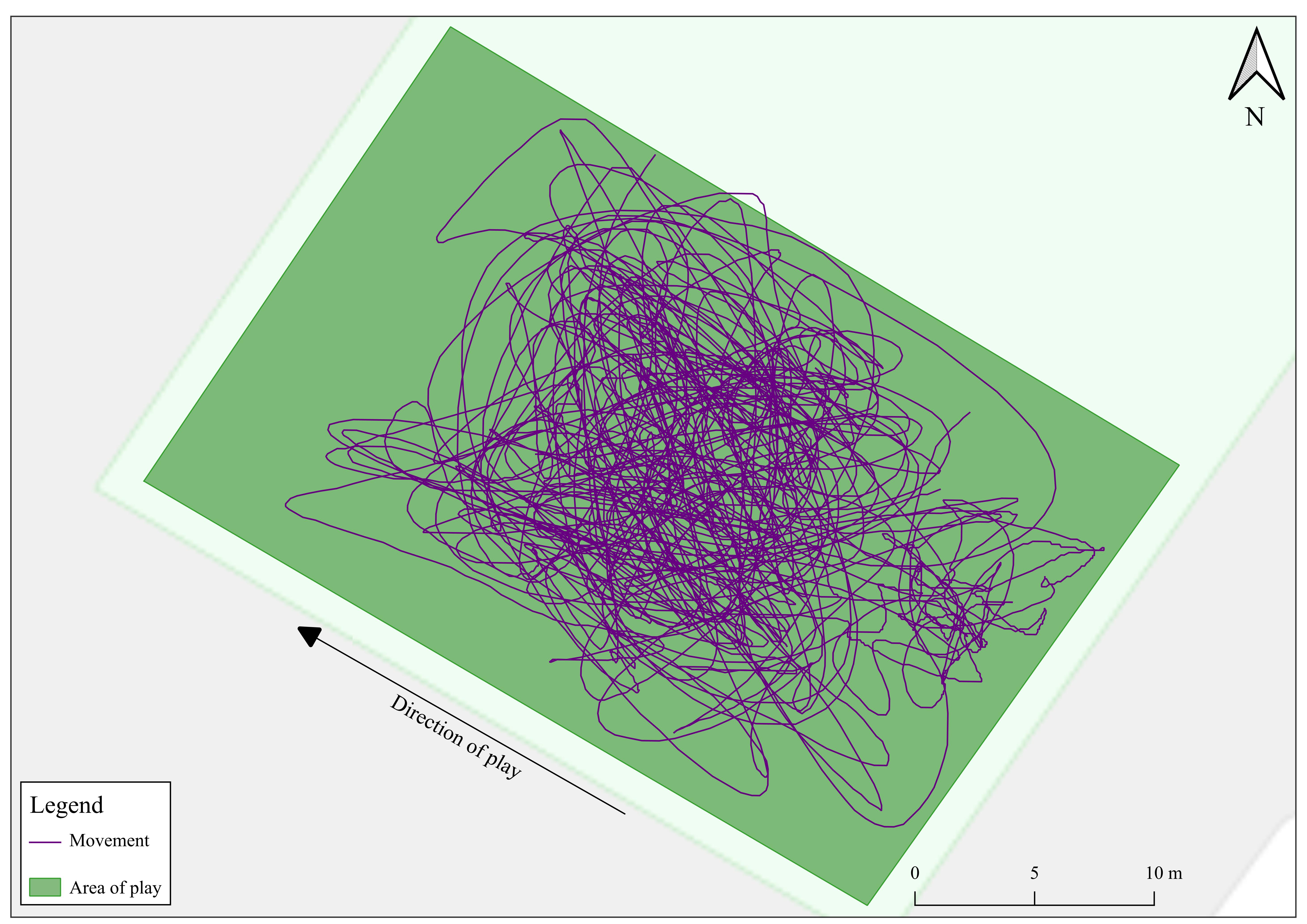 B
B 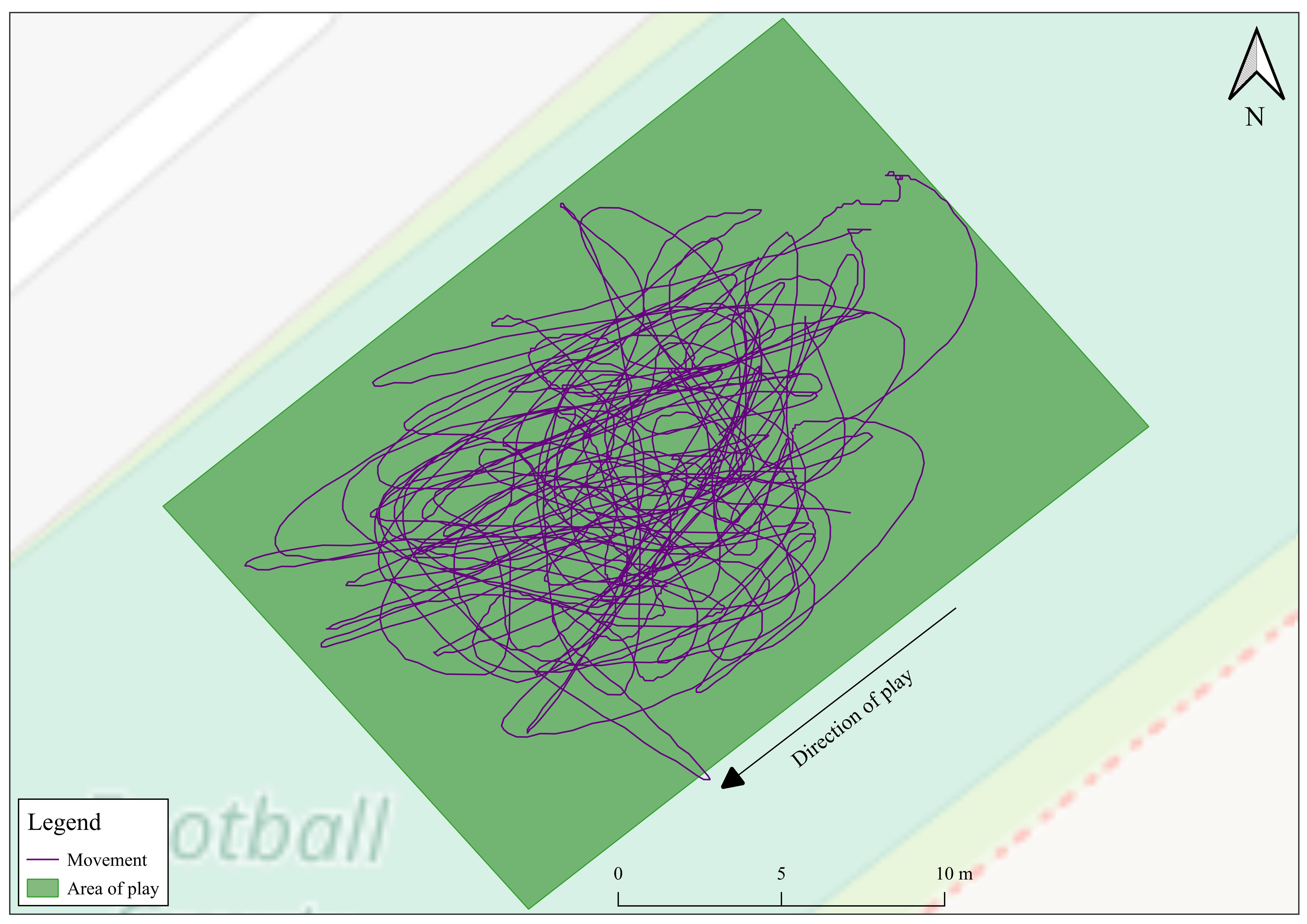
Following this, I wanted to figure out my average positioning throughout each session. Using the raw point data, I executed the mean coordinate function to calculate the centre of mass and illustrate my mean positioning. The overall average position was the mean of all point data whereas the four-quarter averages were calculated by selecting the relevant data in the attribute table which was based on time.
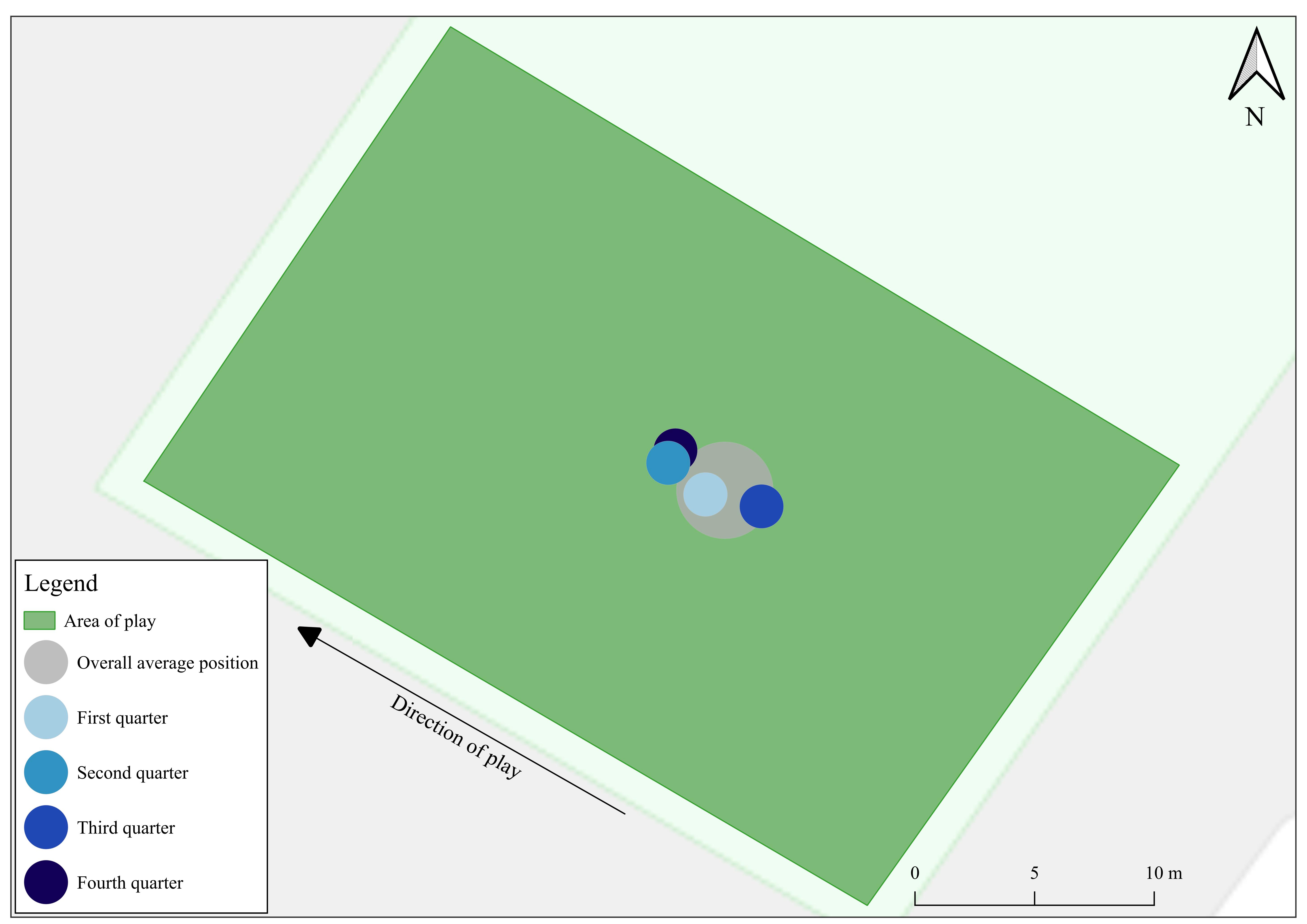 B
B 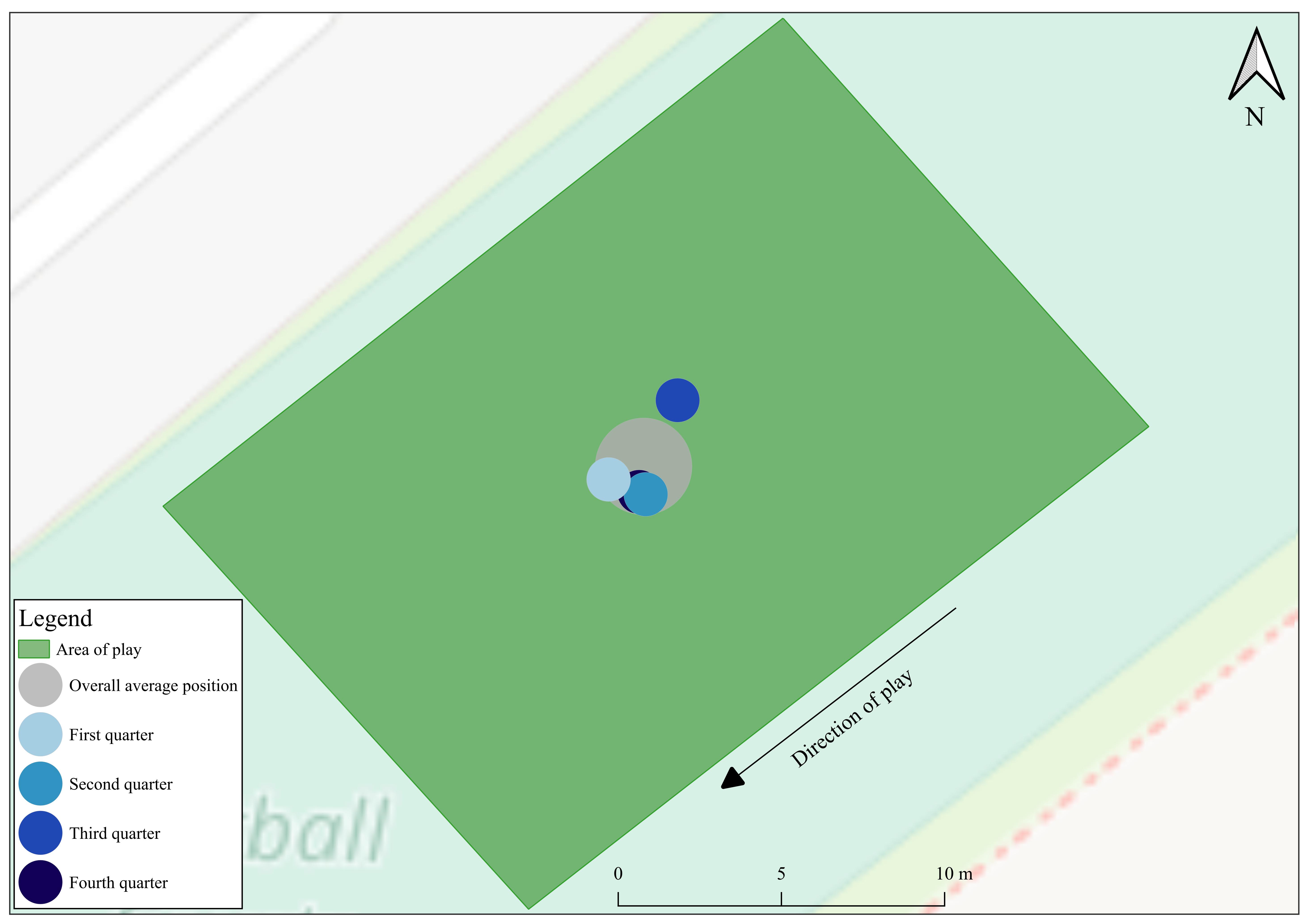
Using the point data, it was possible to create a heat map of my movement. This type of map is useful in illustrating my overall activity throughout the session as it identifies the spaces I occupied and visualises the intensity of my movement. I chose to use red as the band of colour as the shading clearly summarises the intensity of the point data in that space.
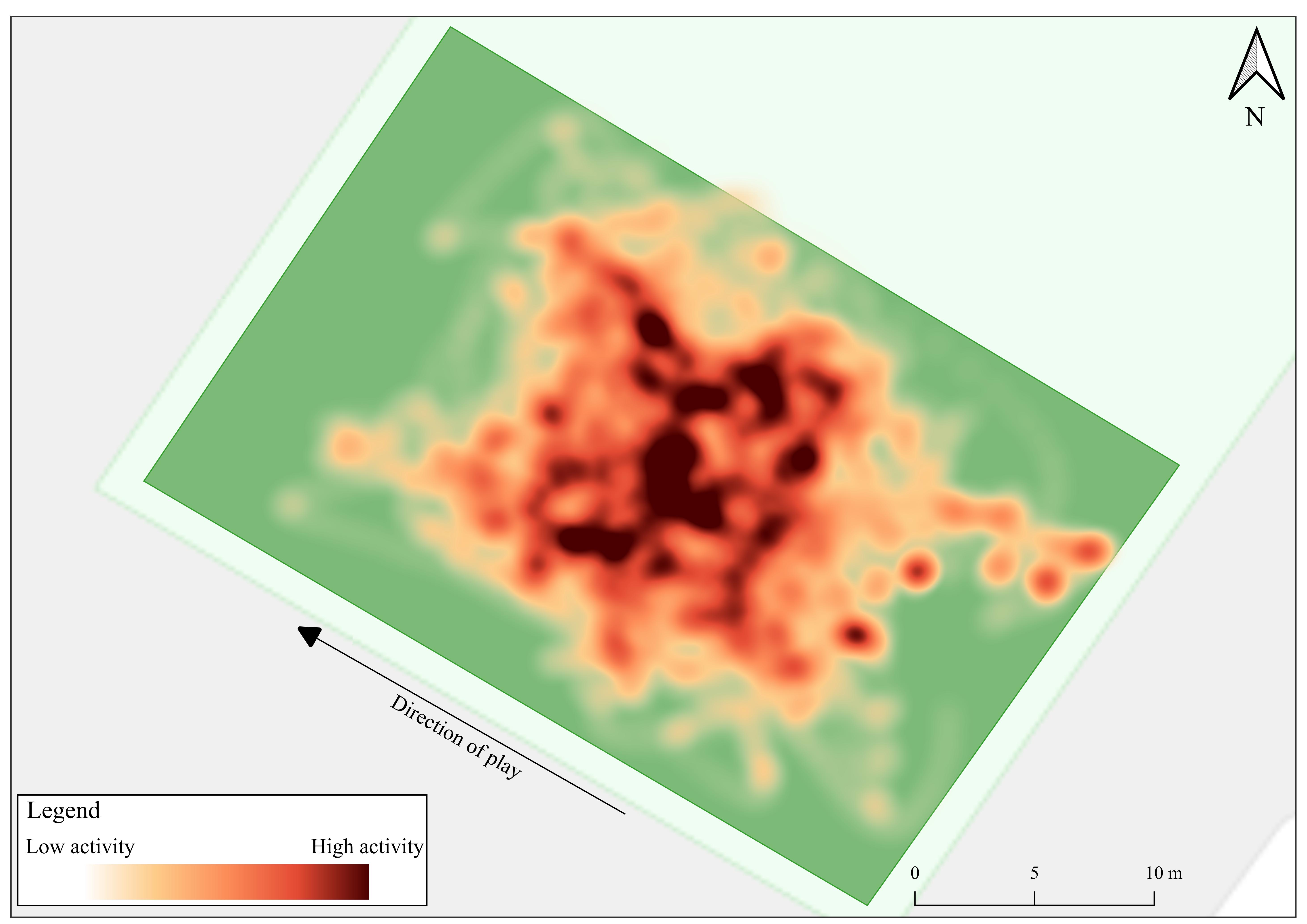 B
B 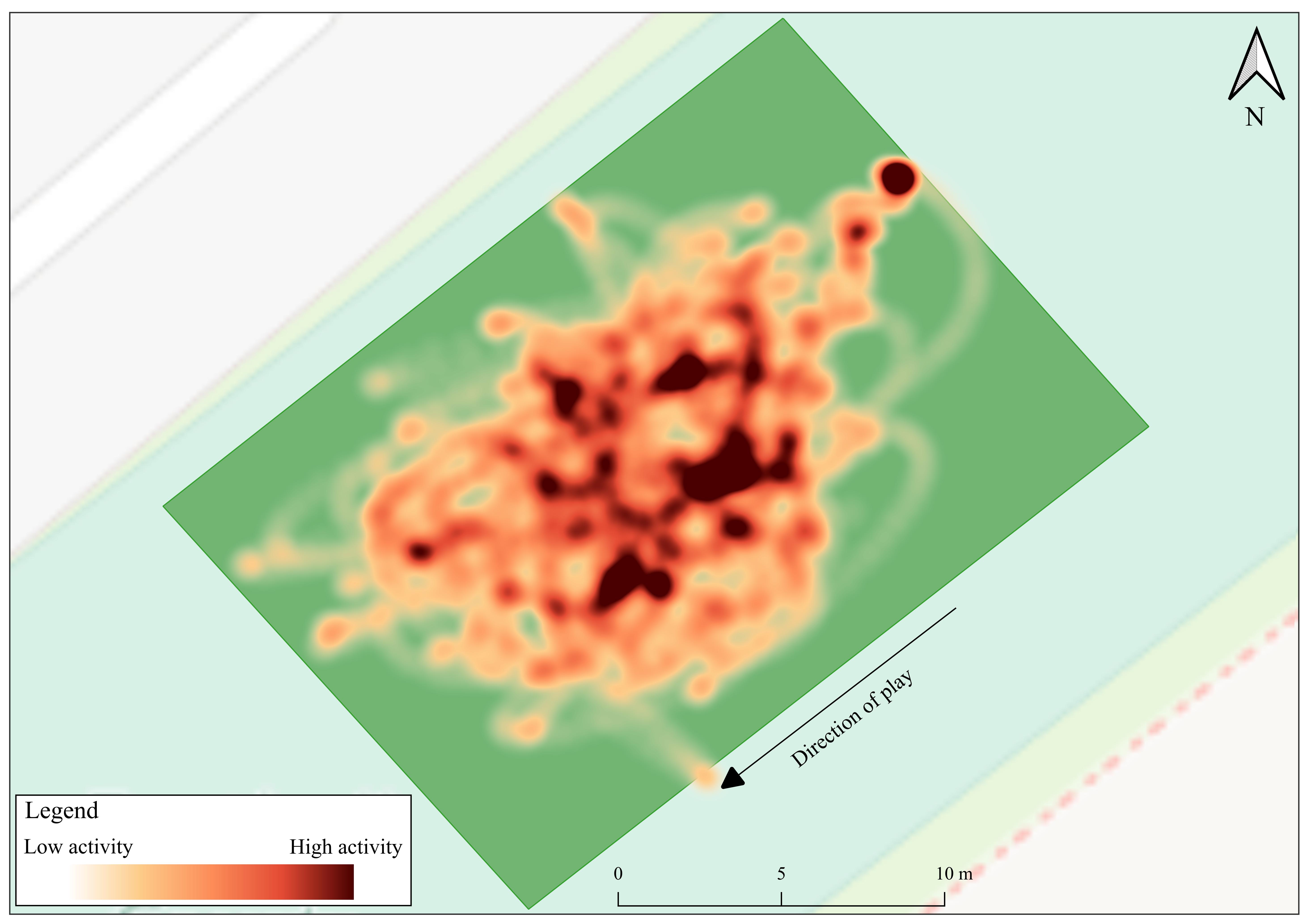
The final maps in this section build on the previous heat-based representations by generating a graduated symbol to show the relative time spent in various spaces on the field of play. To do this, I divided the field of play into sixteen separate areas and totalled the number of points in each of these polygons. After generating a central point for each of the sixteen polygons, I joined the total number of points and represented the polygon centroid as a size relative to the point total. This is shown as several different sized grey circles and demonstrates the relative time and activity of movement in this general area.
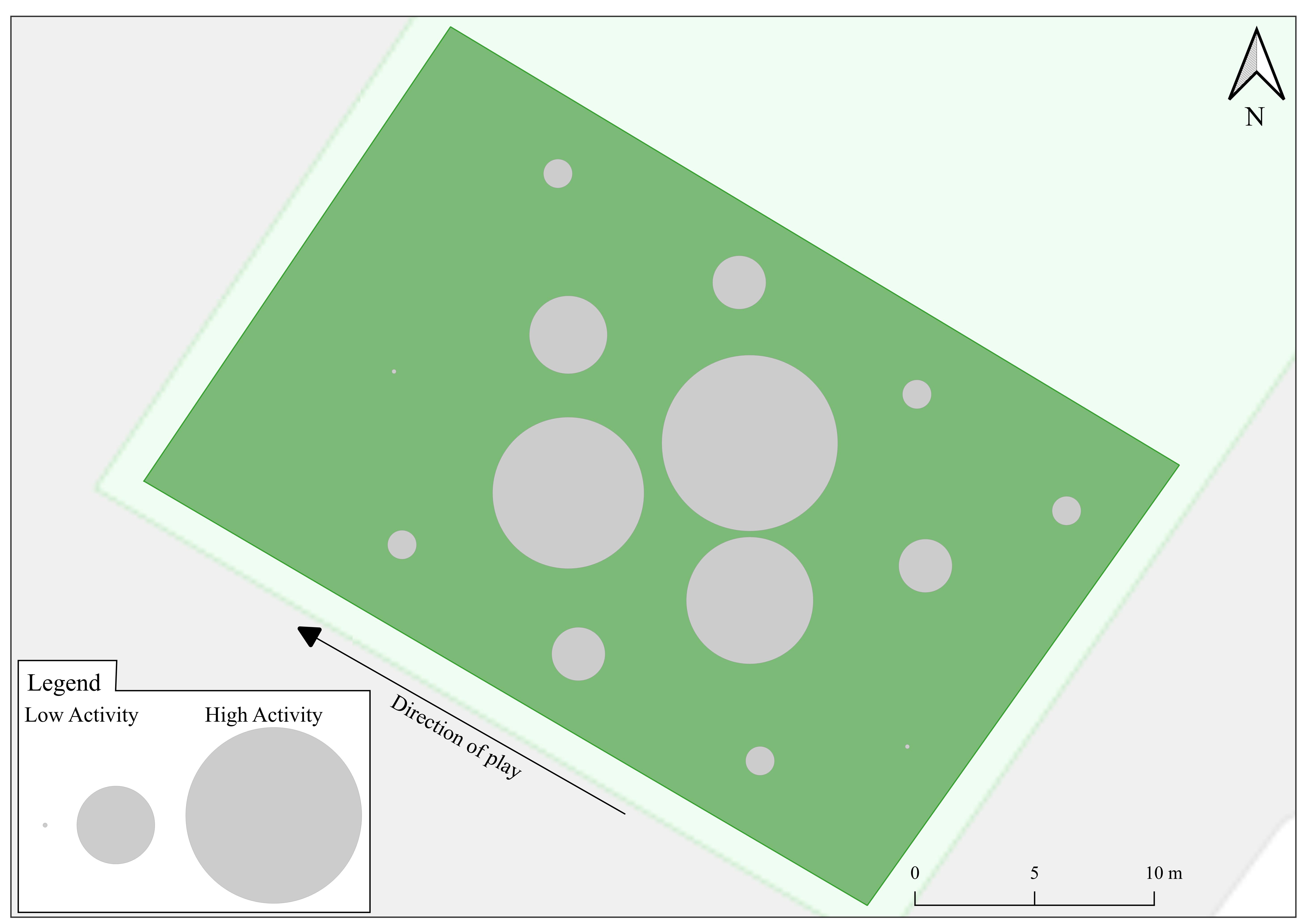 B
B 